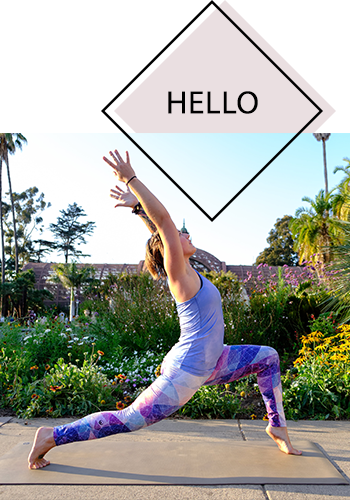Your Own Sweat Box: How to Set Up a Bikram Yoga Hot Room at Home
/Photo via Bikram Yoga Redmond.
Have you ever considered setting up an at-home space to practice Bikram yoga in the heat?
If you've been practicing Bikram's beginning series for a while, this could be a great step to deepen your practice. Setting up your at home "Torture Chamber" does take a little planning, but it's well worth it.
Photos via Berries and Bikinis and Christina Earl.
So, where do you start? Here's a list of what you'll need to get your hot room ready.
- Adequate space (large enough for your mat plus a little extra space around the edges; make sure you can extend your arms at full reach in all directions).
- A heat source (space heaters seem to be the trend), plus a thermometer to measure the temperature and keep it regulated.
- A humidity source (optional - some people go without this at home; also keep in mind that certain heaters offer better humidity than others).
- Yoga mat and towel, plus some yoga wear you're willing to sweat in. I recommend K. Deer bumbum bottoms, Onzie, and Iluka Activewear.
- A mirror (preferably full-length) so you can monitor your alignment in each posture.
- Studio experience with the postures for a basic understanding of Bikram yoga. Warning: if you don't know the series, don't practice it at home! At least until you've had some practice in a studio under the guidance of a certified teacher.
- The Bikram class on CD (sold on Amazon).
- I also highly recommend you check out the book Bikram's Beginning Yoga Class to increase your knowledge of each posture.
Photo illustration by me.
Here are some space heater options, listed from cheapest to most expensive:
- Holmes HQH319-U Quartz Tower Heater - about $40-80
- Holmes HCH4953-U Ultra Quiet Ceramic Heater - about $45-70
- Vornado TVH500 Electric Space Heater - about $100
- Eco-heater 602 High-Efficiency Electric Panel Whole-Room Heater - around $100
- Dr Heater Quartz + PTC Infrared Portable Space Heater - around $160-200
- EdenPURE 1000 Infrared Heater Gen 4 - about $400-500
*Note: I haven't tried any of these and I don't have my own Bikram space set up at home, but in my online research these seem to be popular choices among the Bikram yogi crowd!
- If you have a large bathroom, you might consider setting up in there. I've read that many people turn on their shower or fill a bathtub to increase humidity. This sounds like it might work well, but keep in mind it's not the most eco-friendly approach!
- Insulate: consider adding carpeting to hardwood or tile floors to add heat. You might also want to look into plastic treatment over windows so that warm air is held in and cold drafts can't enter the room. A door snake can also help keep the room contained; learn how to make one here.
- Fans can help circulate air inside the room, so heat isn't concentrated in one spot.
- Hydrate! As when you practice in a studio, be sure to drink lots of water before your Bikram class. Drink 16-32 ounces at least 2 hours prior to practicing, and double that after you shower.
- Remember to be safe. Keep water in the room in case you feel overheated. Especially if you're fairly new to Bikram, include emergency props in your home space as well: a cushion or chair to elevate your legs after laying down, and a washcloth so you can wipe down your mat and keep it from being a slipping hazard. Sit down if you feel lightheaded, dizzy or faint -- you are your own teacher at home, so don't risk injury.
Photos via Bikram Yoga Dallas and Sierra Sun.
A few final things to keep in mind... as an intermediate to advanced Bikram practitioner, starting your home practice can lead you to improve your yoga. You'll learn the valuable skill of self-correction by monitoring your own practice closely in private. This also means each posture will be better for you because it's more precise.
You'll also experience deeper focus than in a crowded class. At home on your own, there are no distractions to keep you from your yoga, so your monkey mind will quiet down.
That's perhaps the greatest benefit of experiencing Bikram yoga in a quiet, peaceful place: the meditation that follows.




















